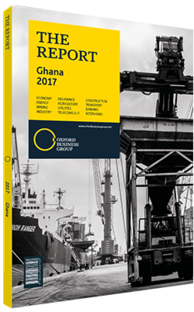Akinwumi Adesina, President, African Development Bank (AfDB): Interview

Interview: Akinwumi Adesina
How can the vulnerability of African markets to global shocks be reduced?
AKINWUMI ADESINA: Several commodity exporters in Africa, including South Africa, Zambia, the Democratic Republic of Congo and oil exporters such as Nigeria, Algeria, Angola, Chad, Equatorial Guinea, Gabon and the Republic of Congo have been severely hit by the dip in commodity prices and the slowdown in China’s economy. These events have led to significant revenue shortfalls in these countries.
The exposure of these markets to external shocks can be reduced by diversification and value addition. African countries must now rapidly diversify their export mix and add value to all of their raw materials by developing efficient and competitive value chains. This is especially critical because Africa only accounts for 1.9% of global value added in manufacturing, and this has not changed for decades.
The formula for the wealth of nations is clear: rich nations add value to exports; poor nations export raw materials. For example, Africa accounts for 75% of global cocoa production but reaps only 2% of the profits from the $100bn annual market for chocolate. Transforming cocoa into chocolate will significantly increase revenues for cocoa exporters. And this is just for cocoa – the same logic applies to oil, iron ore, platinum and manganese, among others.
The good news is that some African countries are already moving forward with the creation of industrial parks for the local transformation of commodities. As a result, there is no risk that commodity exporters will repeat the crises of the 1970s and 1980s. Most if not all of them are setting up industrial parks, putting in place industrialisation strategies and have set up sovereign wealth funds (SWFs) to save the additional revenues from boom years.
At the AfDB, we will be launching an industrialisation strategy for Africa, with the goal of increasing the continent’s industrial GDP from $751bn to $1.72trn within the next decade. This would enable Africa to raise its continental GDP to $5.62trn and its GDP per capita to $3368 by 2025. As part of this strategy, the AfDB will invest $56bn over the next decade into the development of successful industrial policies, the growth of liquid and effective capital markets, the catalysation of funding in infrastructure and industry projects, the promotion of enterprise development, the integration of African markets, the acceleration of capital flows into African countries, and the development of skills and technologies.
What steps can be taken to help bridge the funding gap for infrastructure in Africa?
ADESINA: Public sector funding is not up to the task of solving Africa’s infrastructure challenges. The key is to leverage other sources of capital, particularly private sector capital and long-term funding options such as pension funds and SWFs.
The value of African SWFs rose from $114bn in 2009 to $162bn in 2014, and pension funds currently stand at $334bn. Remittances also increased from $11bn in 2000 to $62bn in 2014. Private equity inflows currently stand at about $20bn per annum, and foreign direct investment inflows rose from $10bn in 2000 to $53bn in 2015. Growth across these sources of financial capital can be leveraged to fund Africa’s infrastructure deficit.
Also important are instruments that reduce risk for private sector players seeking to become involved in infrastructure. At the AfDB, we have partial credit guarantees, which cover scheduled repayments of private sector lenders against the risk of default, and partial risk guarantees (PRGs), which cover private sector lenders against government defaults. We issued a $25m PRG for Africa’s largest wind farm, the 300-MW Lake Turkana Project in Kenya. In 2015 we also launched a credit enhancement facility that de-risks private sector investment in fragile states.
You have reached the limit of premium articles you can view for free.
Choose from the options below to purchase print or digital editions of our Reports. You can also purchase a website subscription giving you unlimited access to all of our Reports online for 12 months.
If you have already purchased this Report or have a website subscription, please login to continue.

